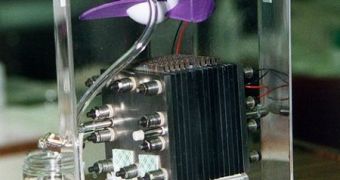Ana Martinez Amesti, a PhD candidate at the University of the Basque Country (UPV/EHU), will soon present her doctoral thesis, entitled “Solid oxide fuel cells. Studies on reactivity and optimisation of cathode-electrolyte interlayer,” to the world. The paper may bear considerable implications for the field of solid oxide fuel cell production, which is currently plagued by obstacles and high costs. Still, fuel cells remain the best option we have for powering the electric vehicles of tomorrow, and more.
Amesti's thesis focuses on potential applications for SOFC, in a wide array of fields, ranging from residential and commercial uses, to inclusion in portable devices and electric power stations, and so on. She reveals that solid oxide fuel cells have been receiving more attention from the scientific community in recent years than any of the other types of fuel cells put together, and for good reason. If made efficient and cost-effective, they can essentially quench our ever-increasing thirst for electrical energy, and can completely take fossil fuels out of the loop, AlphaGalileo reports.
At this point, there are two main issues plaguing efforts to create such SOFC. First of all, the ceramic materials that are required in order to construct the electrodes and the electrolytes require expensive machines and very high temperatures to be produced. Secondly, the solid electrolyte in some designs decays too quickly when the SOFC reaches its optimum functioning temperature, which means that the battery itself loses stability, and is therefore unsuited for commercial, large-scale applications.
Amesti proposes in her thesis the introduction of a new component in solid oxide fuel cells, namely an interlayer between the material acting as a cathode and the electrolyte. She believes that such a modification would essentially decrease the amount of solid state reactions taking place inside the cell, and that it would also increase the conducting properties of the material making up the cathodes. The idea is stated fully in her doctoral thesis.

 14 DAY TRIAL //
14 DAY TRIAL //